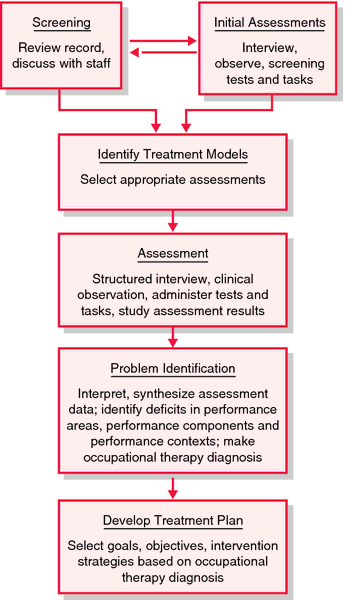
a critical appraisal or assessment; a judgment of the value, worth, character, or effectiveness of something; measurement of progress. A broad view of evaluation in health care includes three approaches, directed toward structure , process , and outcome , depending on the focus of evaluation and the criteria or standards being used.
Structure evaluations are concerned with physical facilities, equipment, staffing, and other characteristics of the facility or agency that have an effect on the quality of care being provided. Process evaluations center on the activities of the provider and what the provider has done to assess, plan, and implement nursing care. The criteria used in process evaluations in nursing are the Standards of Nursing Practice developed by the American Nurses' Association. Structure and process evaluations are primarily concerned with quality assurance and nursing audits . Outcome evaluations focus on the patient and goals set forth in the care plan and therefore are patient- and goal-oriented. Thus, outcome evaluation is the measurement of a patient's progress or lack of progress toward achievement of specified goals.
The purpose of the evaluation is to determine whether outcome criteria have been met and how care for the patient might be improved. Evaluation is not done to find fault or lay blame for inefficiency, incompetence, or carelessness. It is done for the purpose of improvement, by identifying specific areas that need change for the better. Some weaknesses that could be found during evaluation are vague or inaccurate statement of the problem because of poor assessment or faulty analysis and interpretation of data, unrealistic goal-setting due to overestimating capabilities of the patient or available resources, and well-intentioned but inappropriate nursing interventions that do not effectively meet the hoped-for outcome criteria.
Evaluation of direct care and the effectiveness of care plans and interventions is an ongoing activity. It serves to direct reassessment of patient status, the reordering of priorities, new goal-setting, and revision of nursing care as indicated.
The basic components of evaluation are (1) identifying the parameters of the subject of appraisal, (2) developing criteria specific to the topic within the parameters, (3) data gathering, (4) measuring the data against the criteria, and (5) employing the results of assessment for improvement of the process, status, behavior, or activity evaluated.
Parameters are the exact dimensions or fixed limits that clearly define the area of evaluation. They establish the frame of reference within which the process will take place and are essential to accurate interpretation and meaningful use of the results of the evaluation. Parameters to be considered might include the framework of time within which the data gathering will take place, description of the kinds of data to be obtained, and specification of the patient population selected for evaluation of patient care. In a nursing audit , for example, the medical records chosen for audit might be those of patients whose admission and discharge dates were within a specific period of time, and whose age range and diagnoses were similar. Since it is a nursing audit, the kind of data collected should be limited to information related to the area of nursing activities and the resulting patient care outcomes recorded on the patient's chart.
In the assessment of a patient's status on the health/illness continuum, the parameters might limit the appraisal to respiratory function, neuromuscular function, emotional status, or any of a number of areas that are important to accomplishing the overall goals and objectives of health care for that specific patient.
Data gathering involves the collection of information that gives factual and objective evidence about the subject being evaluated. The evidence may be obtained through observation, interview, the review of patient records, and, as in the case of assessment of a patient's health/illness status, through such procedures as laboratory analysis and testing, radiologic studies, and other diagnostic techniques, as well as a physical assessment or examination and history taking.
The data collected become documented evidence, which is then measured against the established criteria. If the evidence indicates that all of the criteria are being met, there is no indication of a problem in the area of evaluation. If the evidence shows that certain criteria are not met, these deficiencies are identified as the ones needing attention so that there can be progress toward the stated goals.

criterion-referenced evaluation evaluation of performance by judging an individual's behavior, performance, or knowledge against specific criteria or standards. See also criterion-referenced testing .
formative evaluation evaluation that involves feedback regarding progress being made; it involves the continuous gathering of evaluative data throughout a learning experience.
normative-referenced evaluation evaluation in which the scores of an individual are interpreted in light of the norm or distribution of scores of others taking the same test; progress is determined by how well the individual compares with peers.
outcome evaluation see evaluation . process evaluation see evaluation .product evaluation in the nursing interventions classification , a nursing intervention defined as determining the effectiveness of new products or equipment.
structure evaluation see evaluation .summative evaluation evaluation that involves one statement of the extent of achievement of objectives or goals; it involves the gathering of evaluative data at the end of a learning experience.
Miller-Keane Encyclopedia and Dictionary of Medicine, Nursing, and Allied Health, Seventh Edition. © 2003 by Saunders, an imprint of Elsevier, Inc. All rights reserved.